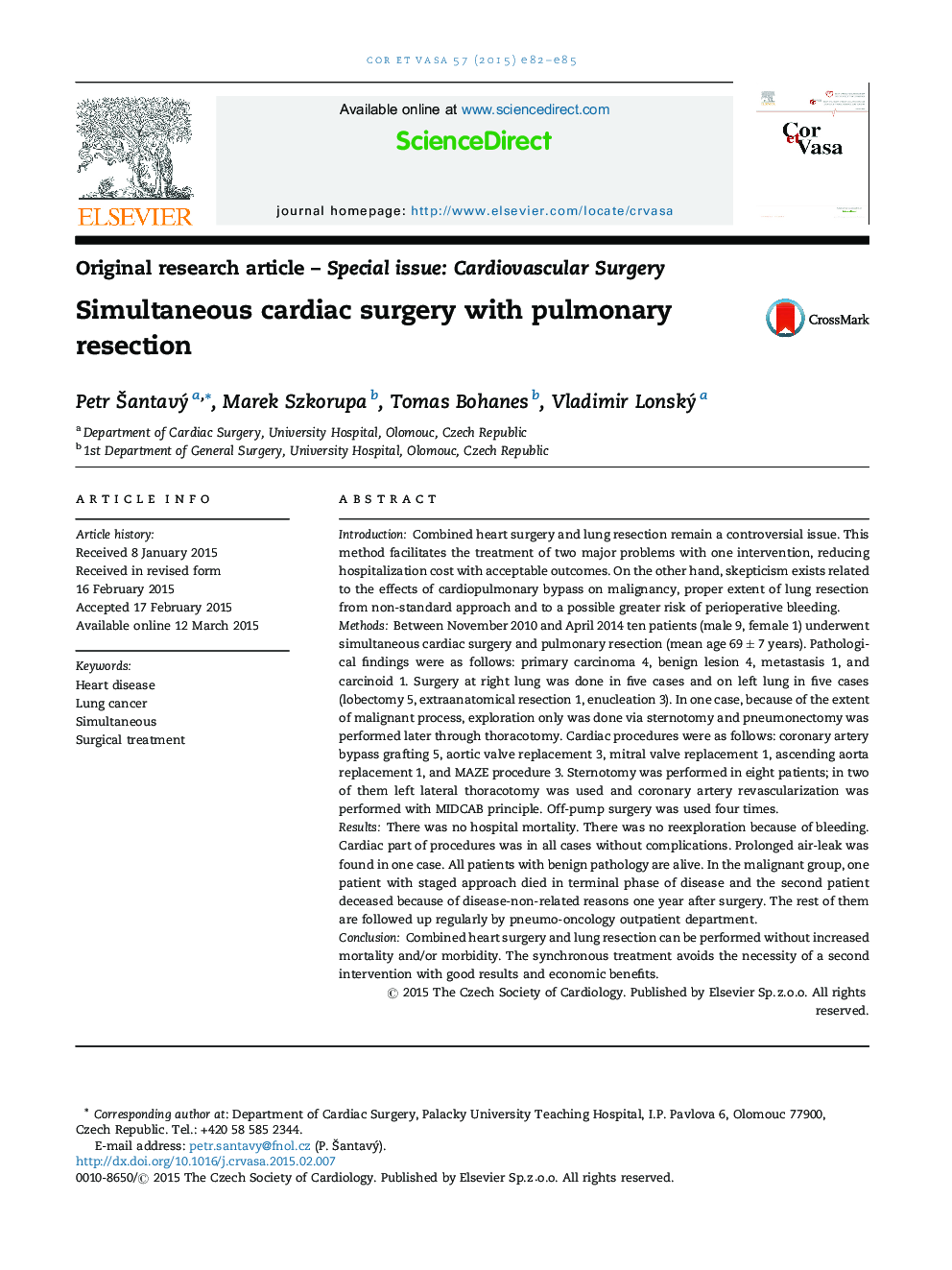| Article ID | Journal | Published Year | Pages | File Type |
|---|---|---|---|---|
| 2728391 | Cor et Vasa | 2015 | 4 Pages |
IntroductionCombined heart surgery and lung resection remain a controversial issue. This method facilitates the treatment of two major problems with one intervention, reducing hospitalization cost with acceptable outcomes. On the other hand, skepticism exists related to the effects of cardiopulmonary bypass on malignancy, proper extent of lung resection from non-standard approach and to a possible greater risk of perioperative bleeding.MethodsBetween November 2010 and April 2014 ten patients (male 9, female 1) underwent simultaneous cardiac surgery and pulmonary resection (mean age 69 ± 7 years). Pathological findings were as follows: primary carcinoma 4, benign lesion 4, metastasis 1, and carcinoid 1. Surgery at right lung was done in five cases and on left lung in five cases (lobectomy 5, extraanatomical resection 1, enucleation 3). In one case, because of the extent of malignant process, exploration only was done via sternotomy and pneumonectomy was performed later through thoracotomy. Cardiac procedures were as follows: coronary artery bypass grafting 5, aortic valve replacement 3, mitral valve replacement 1, ascending aorta replacement 1, and MAZE procedure 3. Sternotomy was performed in eight patients; in two of them left lateral thoracotomy was used and coronary artery revascularization was performed with MIDCAB principle. Off-pump surgery was used four times.ResultsThere was no hospital mortality. There was no reexploration because of bleeding. Cardiac part of procedures was in all cases without complications. Prolonged air-leak was found in one case. All patients with benign pathology are alive. In the malignant group, one patient with staged approach died in terminal phase of disease and the second patient deceased because of disease-non-related reasons one year after surgery. The rest of them are followed up regularly by pneumo-oncology outpatient department.ConclusionCombined heart surgery and lung resection can be performed without increased mortality and/or morbidity. The synchronous treatment avoids the necessity of a second intervention with good results and economic benefits.
